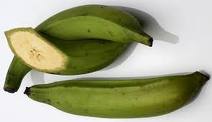The Himalayan firs, both Abies pindrow Royle, also known as Abies webbiana pindrow, the West Himalayan fir and the East Himalayan fir, Abies spectabilis can hybridize, which is both good and bad for their survival. These are members of the Pinaceae family of plants so they are related to the chilgoza producing pine and the European pine which produces pignoli or the smaller pine nuts used in the cuisine of the Mediterranean regions. Theses firs are under threat because of unsustainable harvesting practices, as they are used by local people for fuel. In Pakistan
The West Himalayan fir is a slow-growing tree and likes shade, but doesn’t thrive in frosty conditions. Locals chop down rhododendrons for cooking and forage food for their livestock and this is often left on the forest floor. New trees fail to sprout because of this litter. Young trees are used for poles, and the older ones are felled for timber and fuel. The wood is light and not very durable, but is made into furniture and construction to make door and window frames.
 Unlike the Himalayan yew, Taxus wallichiana the trees are not under threat because of their medicinal qualities as the leaves of the tree are used primarily and not the bark and wood, which in the Himalayan yew is the source of an anti-cancer drug, taxol. Scientists and agriculturalists have been warning for more than a decade that these firs are threatened because of unsustainable forestry management and this seems not to have been addressed, their numbers are still in decline.
Unlike the Himalayan yew, Taxus wallichiana the trees are not under threat because of their medicinal qualities as the leaves of the tree are used primarily and not the bark and wood, which in the Himalayan yew is the source of an anti-cancer drug, taxol. Scientists and agriculturalists have been warning for more than a decade that these firs are threatened because of unsustainable forestry management and this seems not to have been addressed, their numbers are still in decline. In Ayurvedic medicine the leaves are used for heart problems, and the leaves are used for various purposes. A tincture or decoction of the leaves is used for asthma chronic bronchitis and lung infections, while the powdered leaves are used with the juice of Adhatoda vasica for coughs and colds. The juice from the leaves is added to mother’s milk or water and given to infants with a fever. For this 5 to 10 drops of juice are added to the liquid to be used.
 Clinical trials have found that extracts of the leaves of the West Himalayan fir are in many ways consistent with their uses in traditional medicine. They have anti-inflammatory properties and anti-depressant activity, with some sedative actions. They protect from ulcers, perhaps because of the steroids contained in them, but have yet to show antibacterial properties in the lab in vitro. They have some effect on insulin secretion and may have the potential for anti diabetic drugs. It is thought that the flavonoids and triterpenoids present may help to protect the lungs. They also have some pain-killing properties. A new alkaloid has been isolated from the leaves to and investigations are still underway to discover how the extracts can be used to benefit our health.
Clinical trials have found that extracts of the leaves of the West Himalayan fir are in many ways consistent with their uses in traditional medicine. They have anti-inflammatory properties and anti-depressant activity, with some sedative actions. They protect from ulcers, perhaps because of the steroids contained in them, but have yet to show antibacterial properties in the lab in vitro. They have some effect on insulin secretion and may have the potential for anti diabetic drugs. It is thought that the flavonoids and triterpenoids present may help to protect the lungs. They also have some pain-killing properties. A new alkaloid has been isolated from the leaves to and investigations are still underway to discover how the extracts can be used to benefit our health.

















































